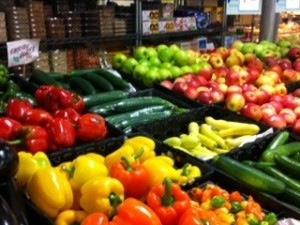 Do you have a complicated relationship with food? Most of us do. We need food to survive – but all too frequently we eat more than we need – and what we eat isn’t always nutritionally the best (does this push your chocolate/chips/candy/cookie bell?).
Do you have a complicated relationship with food? Most of us do. We need food to survive – but all too frequently we eat more than we need – and what we eat isn’t always nutritionally the best (does this push your chocolate/chips/candy/cookie bell?).
This quote from a story on Time.com called The Science of Appetite says it all: “Somewhere in your brain, there’s a cupcake circuit. How it works is not entirely clear, and you couldn’t see it even if you knew where to look. But it’s there all the same—and it’s a powerful thing. You didn’t pop out of the womb prewired for cupcakes, but long ago, early in your babyhood, you got your first taste of one, and instantly a series of sensory, metabolic and neurochemical fireworks went off.”
What Factors Feed Into What We Eat?
Many factors that feed into what we eat. Sometimes just the very sight, smell, and/or thought of something delicious trip some of your internal food bells and might make you want to eat even when you’re not hungry.
Come on, ‘fess up, how many times have you walked down the street – or have been in the mall – or have been sitting in a restaurant stuffed to the gills – and then you see or smell something that you didn’t know you wanted 30 seconds before? All of a sudden you absolutely crave whatever tickled your nose, eyes, and taste buds and 30 seconds after that you’re chowing down. You’re putting food into your mouth even though you’re not hungry and didn’t even want what you find yourself eating before you saw it and/or smelled it!
Why we do this is really complicated – and if science had all of the answers weight management wouldn’t be such a topic of conversation.
How to Put On The Brakes
There is something you can try to help you put on the eating brakes – especially with holiday eating. Give yourself a mini-pause and ask yourself:
- Do I really want to eat that?
- Do I really, really want it or do I want it because it looks good, smells good, and means Christmas (or Halloween, or Thanksgiving, or Hanukkah, or Valentine’s Day or whatever memory it provokes?
- Is it worth the calories?
- Do I need all of it (or any of it) to be happy or satisfied?
- How will I feel after I eat it – both physically and emotionally?
- What is more important to me: the food, how I feel while I’m eating it, how I feel after I eat it, and/or what the scale might say to me tomorrow morning?
Find more tips, strategies, and solutions in my new book, The Sensible Holiday Eating Guide: How To Enjoy Your Favorite Foods Without Gaining Weight available on Amazon for your Kindle or Kindle Reader.



